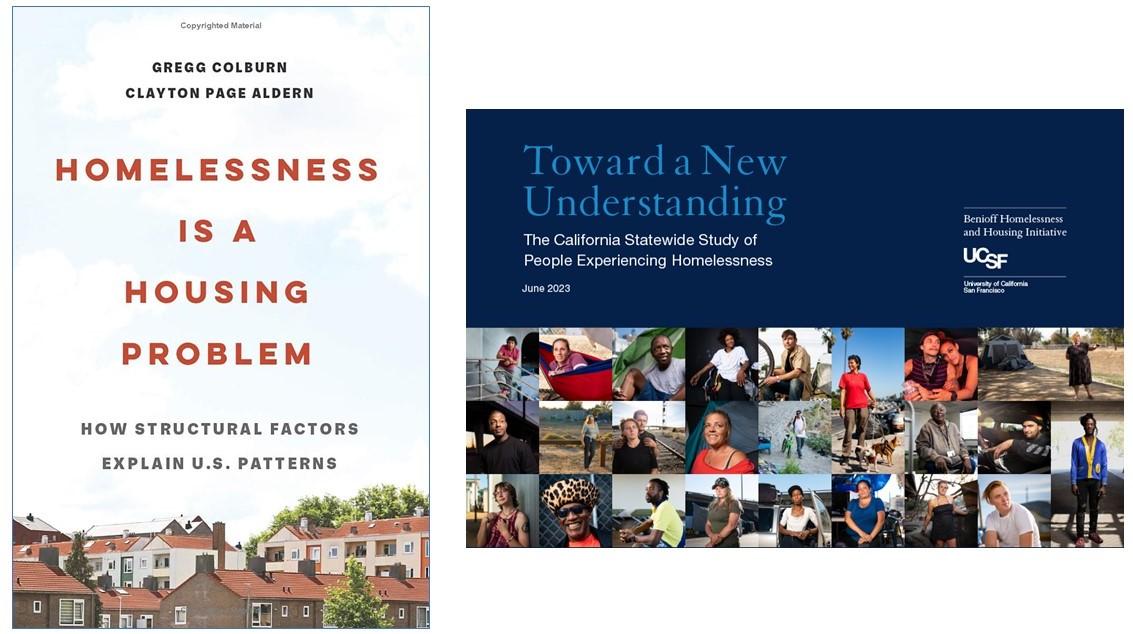
Understanding Homelessness—Two Important Studies
My summer reading stack included two items that help us understand the causes of homelessness and lead us to viable solutions. The first is a book, Homelessness Is a Housing Problem: How Structural Factors Explain U.S. Patterns, by Gregg Colburn and Clayton Page Aldern (2022, 204 pages), and the second is a report, Toward a New Understanding: The California Statewide Study of People Experiencing Homelessness (2023, 96 pages), by the Benioff Homelessness and Housing Initiative at University of California San Francisco. You can download Benioff study for free here.
Homelessness Is a Housing Problem is a data-driven analysis of the homelessness problem as it plays out across the United States. Colburn and Aldern divide the issue into two parts:
- structural, including high housing costs, market conditions, racism, discrimination, and inequality, and
- individual, including addiction, mental illness, poverty, domestic violence, eviction, racial discrimination, and unemployment.
As the authors combed the data, none of the individual causes could explain different rates of homelessness in different jurisdictions or the relationship between median income and the median rent. For example, some cities with very high poverty rates had low homelessness, which usually meant there was lots of affordable housing (30–35 percent of income covered the rent). While sometimes the data is fully accessible only to statisticians, the narrative clearly explains the data and what it is revealing.
The statewide study Toward a New Understanding surveyed nearly 3,200 people experiencing homelessness and then interviewed 365 of those respondents, exploring the reasons they found themselves “on the streets.” The primary causes were economic: The median income of those without housing was inadequate to afford an apartment and have enough left over to provide for other necessities. The authors share many vignettes in the words of those they interviewed to help the reader understand what puts people on the street and how hard it is to find a place to move back indoors.
These two studies came to the same conclusion from two different starting points: The real underlying cause of homelessness is a lack of affordable housing. One study looked at the numbers, and the other looked at the people. They both share some short- and long-term fixes to the sub-problems.
If you wonder why people are on the street and not in homes or if you wish they weren’t on the street, you owe it to yourself to read these two reports.
—Anita Mackey, Chair, Social Services Housing Subcommittee